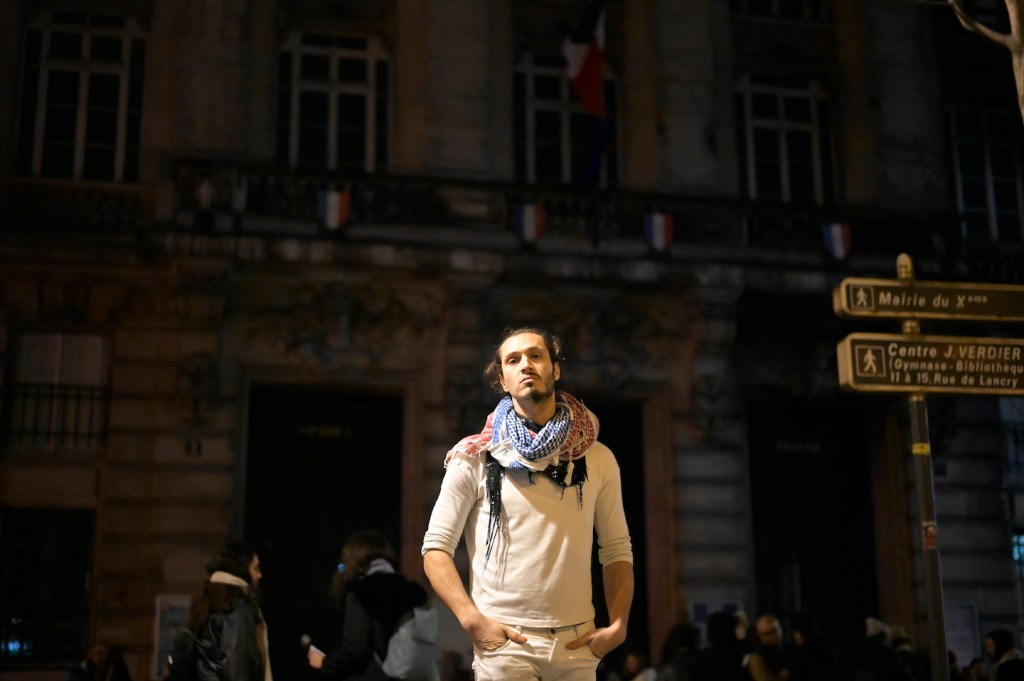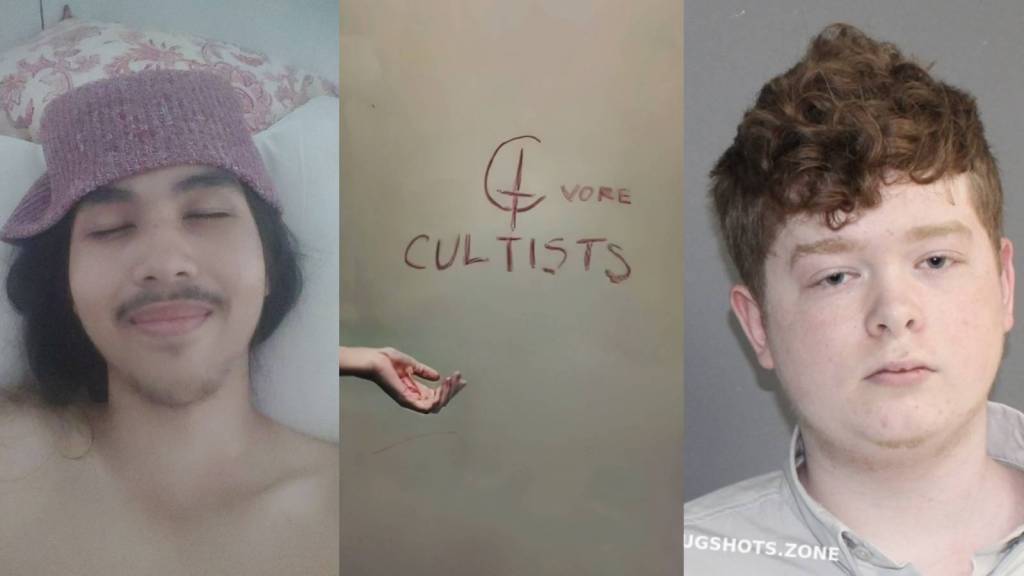For more than a decade, New York filmmaker and activist Reina Gossett has been sifting through libraries and living rooms to research legendary trans activist Marsha “Pay-it-no-mind” Johnson. And for many of those years, she and director Sasha Wortzel have been working to fund and produce Happy Birthday, Marsha! , a fictionalized telling of the moments that lead up to the historic 1969 Stonewall riots, to which Johnson was central. But, in October of 2017, Netflix released a documentary about Johnson’s life by director David France that Gossett publicly claimed relied largely on primary research that she had done and received funding from at least one foundation to which she had also applied. “As the Netflix movie launched, I was borrowing money to pay my rent,” she wrote in an essay about the controversy. In a statement on Facebook, France denied the claims of intellectual theft but acknowledged that, as a white cisgender gay man, his path to funding and producing his film was far easier than that of Gossett, a black transgender woman.
Whether or not France is at fault, the challenges that Gossett has faced with her and Wortzel’s film are indicative of the many ways in which trans cultural production and representation prove relentlessly double-sided—in which taking up any opportunity for visibility or creative pursuit is always also risking tokenization and co-option for the benefit of already powerful people and institutions.
Videos by VICE
“It is this kind of violent extraction—of black life, trans life, queer life, disabled life, poor life—that leads so many of us to hold our ideas close to our chests; to never let the world see how brightly we shine,” Gossett wrote in the same essay. “Until all of our ideas and lives are celebrated and given the resources we need and deserve, so much of our brilliance will remain hidden out of fear of our lives and labor being violated and appropriated.”
Aptly, Gossett, along with Eric A. Stanley and Johanna Burton, is one of the editors of a new anthology, Trap Door: Trans Cultural Production and the Politics of Visibility, published collaboratively by MIT Press and The New Museum, which takes up this paradox of trans and gender nonconforming visibility. And, at a moment when the public is so obsessed with image and celebrity that campaigns for the representation of marginalized people in pop culture often eclipse movements for incarcerated or impoverished marginalized people, many of the authors deftly critique the assumption that representation is necessarily positive, ultimately calling into question what “representation” and “visibility” even mean.
“In today’s complex cultural landscape, trans people are offered many “doors”—entrances to visibility, to resources, to recognition, and to understanding. Yet…these doors are almost always also “traps”—accommodating trans bodies, histories, and culture only insofar as they can be forced to hew to hegemonic modalities,” the editors write in their introduction. “Yet, in addition to doors that are always already traps, there are trapdoors, those clever contraptions that are not entrances or exits but secret passageways that take you someplace else, often someplace as yet unknown.”

Perhaps the most pertinent of these “trap doors” today is that of trans and gender nonconforming media representation. In the past few years we have, almost undeniably, experienced the biggest moment of media visibility for trans and non-binary individuals in the US to date. The common reaction to this moment is to assume that visibility is equal to power, and that media representation provides trans and non-binary Americans with things not previously afforded to them, such as safety, civil rights, and upward social mobility. But, as pointed out by many of the authors included in Trap Door, this new peak in trans and gender nonconforming representation coincides with record-high rates of violence against trans people, particularly trans women of color.
In 2017, 28 trans people were reported murdered (the highest ever recorded), and trans women were four times as likely to be killed than cis women in the US. Meanwhile, trans students nationwide are still fighting for the right to use the bathroom that corresponds with their gender identity, and the Centers for Disease Control is not allowed to use the word “transgender” in its budget for 2018.
“It’s not just about finding lost figures but also about destroying the system that allows people to be lost in the first place.”
In a chapter featuring a conversation between iconic trans activists Miss Major Griffen-Gracy and CeCe McDonald and journalist Toshio Meronek, Griffen-Gracey posits that trans violence is a direct backlash of trans visibility, because seeing trans people being accepted by society causes transphobic people to lash out: “Another trans woman pays the price for what the media is applauding.” And in another , historian Morgan M. Page says she believes this correlation may be nothing new: “Further research may be needed to confirm the link between periods of media visibility for trans people and increased levels of physical and legislative violence against them, but from what I have observed through my historical research, the two seem to follow hand in hand.”
Trap Door’s theme came about in part due to Gossett’s work as an activist. Johanna Burton, the director and curator of education and public engagement at the New Museum in New York, reached out to Gossett about contributing something on trans representation to the museum’s ongoing series of anthologies about various topics in visual culture in 2015. At the time, Gossett was working on a campaign to remove barriers to trans-related healthcare through her job as an organizer at Sylvia Rivera Law Project, a legal aid organization that serves low-income or people of color who are transgender, intersex, and/or gender non-conforming. “The visibility of trans and gender non-conforming people in the mainstream is higher than it’s ever been before, but that’s not necessarily affecting our ability to access healthcare, our ability to access welfare or housing or freedom from police violence or violence on the street,” she recalls thinking at the time. She knew the book should debunk the idea that representation was the end-all answer to trans and non-binary people’s problems.
For co-editing, Gossett reached out to Stanley, who is a filmmaker, activist, and professor of gender and sexuality at the University of California, Riverside. The two decided that part of their intention as editors would be to disprove the idea that theorizing is meant solely for academics, and contribute to a long (but largely unacknowledged) tradition of theorizing by trans and gender nonconforming people about their own lives and futures. “It’s not singularly a process of reclamation or of uncovering—that’s a never-ending practice,” says Stanley of trans and gender non-conforming theorizing. “It’s not just about finding lost figures but also about destroying the system that allows people to be lost in the first place.”
At nearly 450 pages, the anthology includes 21 contributions commissioned specifically for the book—not solely scholarly essays, but transcriptions of public conversations, collaborative poems, roundtables, and satire as well. Throughout, the artists, writers, and activists included identify, each in their own way, various manifestations of trap doors in regards to non-cis experience, with primary themes being: art making, modes of archiving and history making, and the unique visibility of simply existing as a trans or gender nonconforming person.
A conversation between Juliana Huxtable and Che Gossett, entitled Existing in the World: Blackness at the Edge of Trans Visibility, richly describes how relationships with art institutions can often prove to be trap doors. Huxtable points out that art institutions benefit from the positive optics of showing her work, and cisgender viewers walk away feeling good about themselves for having appreciated it, then both call it a day. “And so what’s interesting is the way visibility is being used to sabotage actual engagement with real questions of structural negligence and discrimination,” says Huxtable.
For More Stories Like This, Sign Up for Our Newsletter
In the chapter The Guild of the Brave and Poor Things, which inspired the title of the anthology, Park McArthur and Constantina Zavitsanos take the idea of the door more literally with a series of sharp, co-authored poems and text scores partially about bathroom doors and the ways in which, for black, disabled, and/or trans people, they can be physical traps. (Think anti-trans bathroom bills, bathrooms that are too small for wheelchairs, and the history of whites-only bathrooms.)
Overall, Trap Door’s contents are satisfyingly thorough in their collective coverage and fluid in style. And although the essays offer philosophical implications applicable to the representation and cultural production of many other marginalized communities, they remain personal to their subjects—never abstracting the trans experience to the point of obscuring the actual people living these contradictions. This has the added benefit of ensuring the contributions are messy and challenging, choosing to embrace ambivalence rather than regurgitate familiar rules of what is Good and Bad. “That’s a binary we’re trying to break down, too,” says Stanley.




